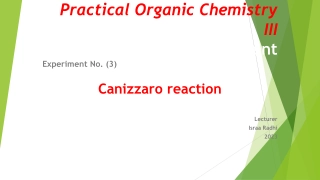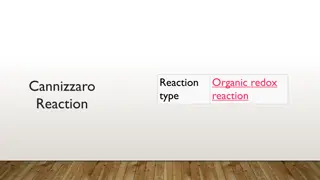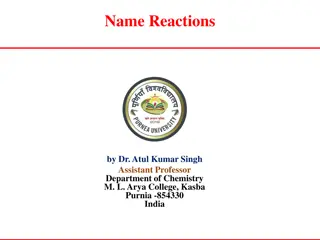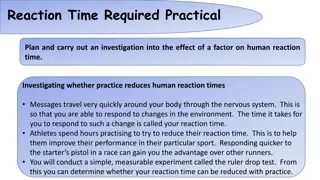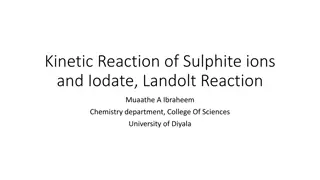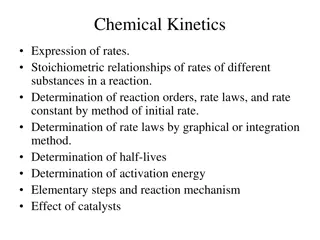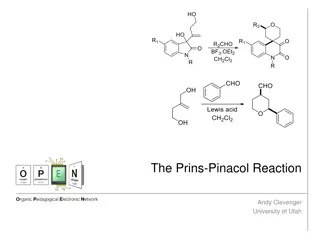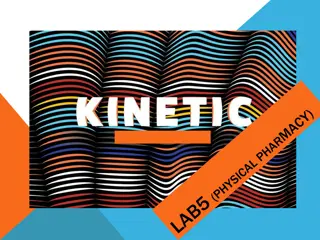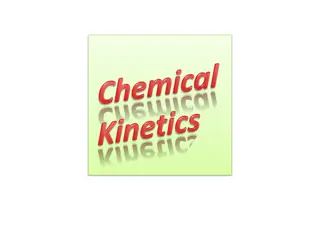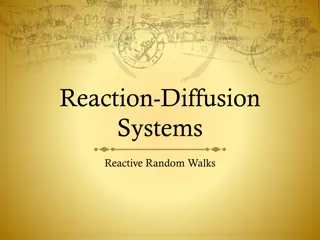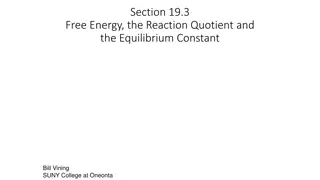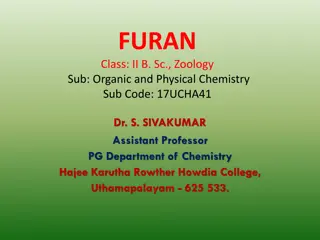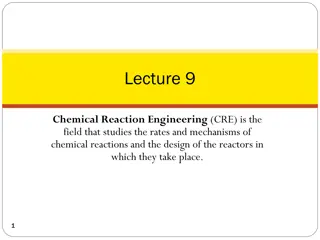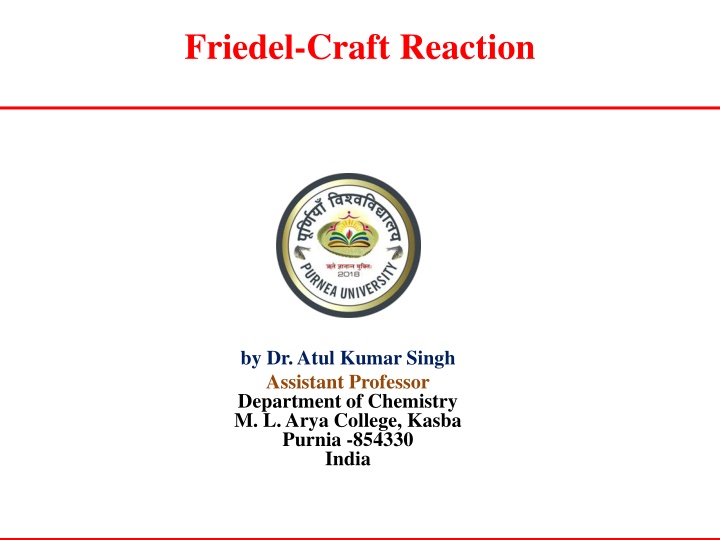
Friedel-Craft Reaction: Mechanism, Types, and Limitations
The Friedel-Craft reaction is a key organic synthesis method developed by Friedel and Crafts in 1877. This reaction involves introducing alkyl or acyl groups into aromatic rings through alkylation or acylation reactions, facilitated by Lewis acids. However, limitations such as rearrangement, polysubstitution, and specific restrictions on reactants exist. Understanding the mechanism and factors influencing the reaction is crucial for effective application in organic chemistry.
Download Presentation

Please find below an Image/Link to download the presentation.
The content on the website is provided AS IS for your information and personal use only. It may not be sold, licensed, or shared on other websites without obtaining consent from the author. If you encounter any issues during the download, it is possible that the publisher has removed the file from their server.
You are allowed to download the files provided on this website for personal or commercial use, subject to the condition that they are used lawfully. All files are the property of their respective owners.
The content on the website is provided AS IS for your information and personal use only. It may not be sold, licensed, or shared on other websites without obtaining consent from the author.
E N D
Presentation Transcript
Friedel-Craft Reaction by Dr. Atul Kumar Singh Assistant Professor Department of Chemistry M. L. Arya College, Kasba Purnia -854330 India
Friedel-Craft Reaction First developed by French scientist Charles Friedel and his American partner James Crafts in 1877 to attach substituent to an aromatic rings. Introduction of an alkyl or acyl group into an aromatic ring is called Friedel-Crafts reaction. Friedel-Crafts reaction are of two main type 1. Friedel-Craft Alkylation reaction 2. Friedel-Craft Acylation reaction
1. Friedel-Craft Alkylation reaction 2. Friedel-Craft Acylation reaction
Friedel-Craft Alkylation reaction Introduction of an alkyl group into an aromatic ring in the presence of lewis acid and alkyl halide (some time other carbocations source like alcohol, alkenes also used) is called Friedel-Crafts reaction. Commonly used Lewis acid are AlCl3, AlBr3, BF3, H2SO4, ZnCl2, HF etc
Alkyl halide reactivity order Lewis acid enhance the electrophilicity of alkyl halide by complexing with the alkylhalide. The reactive electrophile, the carbocation is formed by the removal of the halide by lewis acid catalyst.
Limitation of Friedel-Craft Alkylation 1. Rearrangement: alkylation reaction are prone to rearrangement so it is not possible to introduce a long primary alkyl group.
2. Polysubstitution: Since product is more reactive than the starting material because entering group in Friedal-Craft alkylation is an activating group, hence di- and polyalkylation occurs. 3. Aromatic compounds with m-directing group and deactivated benzene do not undergoes Friedal-craft alkylation. 4. Aryl halide and Vinyl halide can not be used in the place of alkyl halide.

